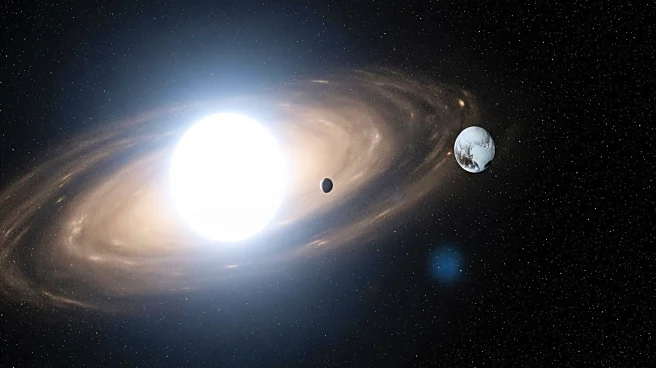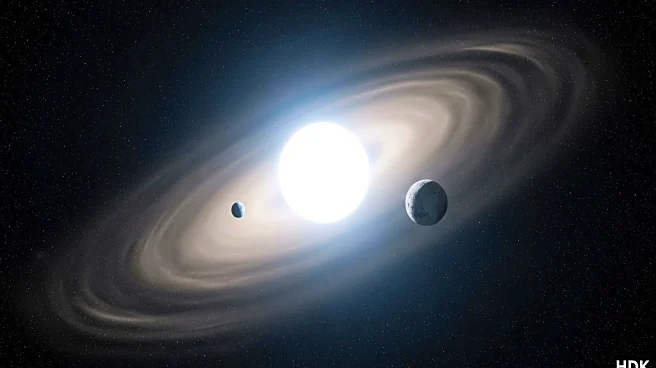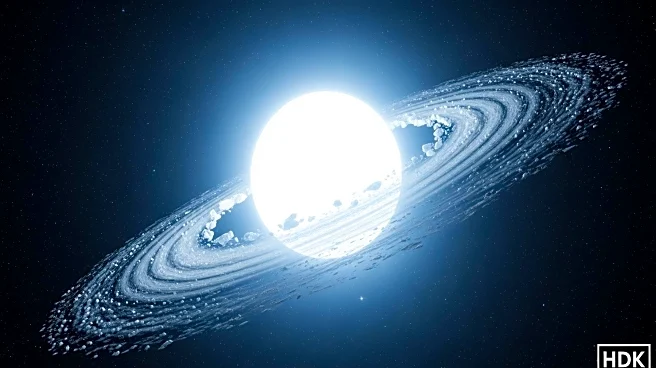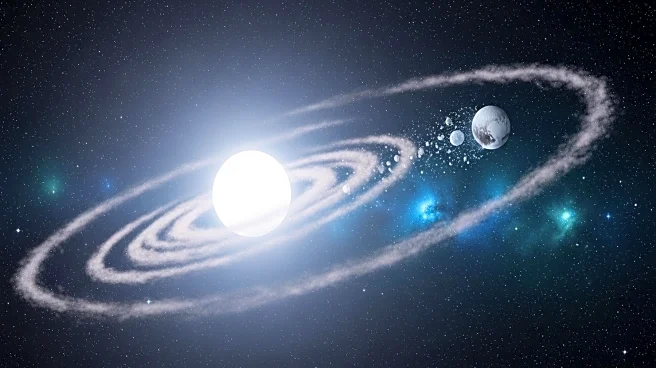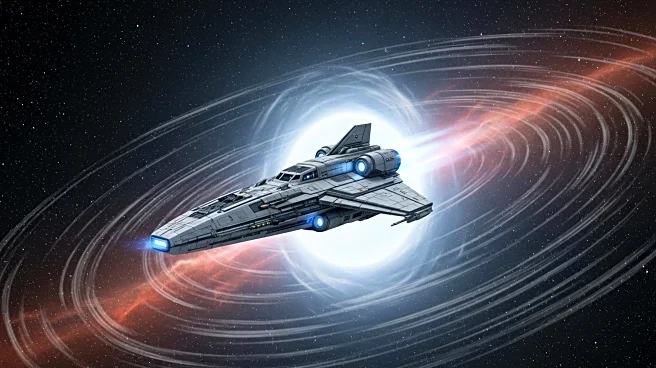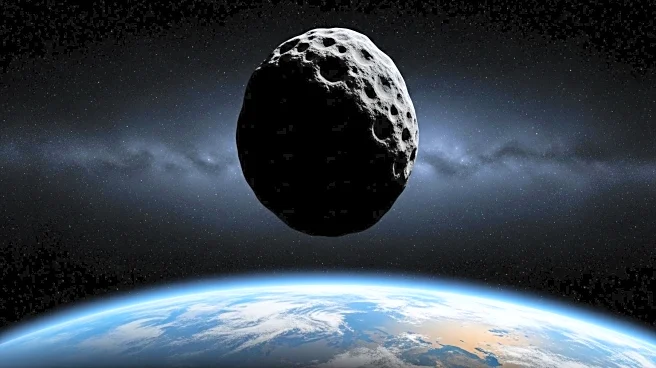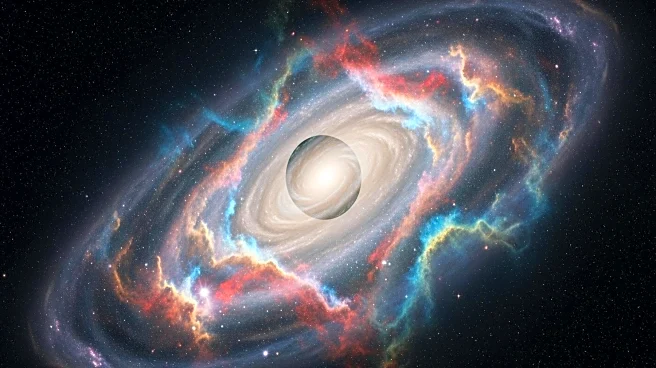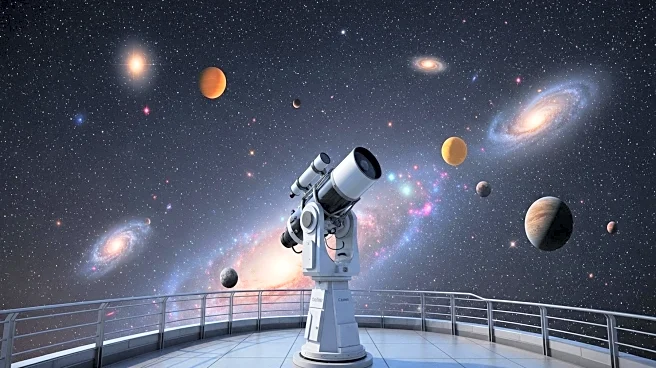What's Happening?
The Hubble Space Telescope has captured a unique astronomical event where a white dwarf star is consuming a fragment of a Pluto-like object. This discovery was made possible due to Hubble's ultraviolet capabilities, which allowed scientists to identify the chemical composition of the object being accreted by the white dwarf. The white dwarf, located about 260 light-years away, is a dense stellar remnant with immense gravity that pulled in and tore apart the icy object from its own version of the Kuiper Belt. The findings, reported in the Monthly Notices of the Royal Astronomical Society, reveal that the object is composed of nearly two-thirds water ice, along with high levels of nitrogen, carbon, sulfur, and oxygen. This suggests the presence of water and other volatiles, which is surprising given the typical evolutionary path of such systems.
Why It's Important?
This observation provides significant insights into the composition and evolution of planetary systems, particularly those involving white dwarfs. The detection of water and nitrogen-rich materials in the debris accreted by the white dwarf suggests that these volatile-rich objects can survive the transition of their host stars into white dwarfs. This has implications for understanding how water and other essential compounds are delivered to rocky planets, potentially influencing theories on planet formation and habitability. The study also highlights the capabilities of the Hubble Space Telescope in detecting such phenomena, paving the way for future observations with the James Webb Space Telescope to further explore these volatile-rich accretion events.
What's Next?
The research team plans to use the James Webb Space Telescope to observe the white dwarf in infrared light, aiming to detect molecular features of volatiles such as water vapor and carbonates. This will enhance the understanding of the frequency and composition of volatile-rich accretion events. Additionally, ongoing studies of interstellar comets like 3I/ATLAS will provide further insights into the chemical composition of these objects, contributing to the broader understanding of planet formation and the delivery of water to rocky planets.
Beyond the Headlines
The findings from this study could have long-term implications for the study of exoplanets and the potential for life beyond Earth. By understanding the composition of objects in the outer reaches of planetary systems, scientists can better predict the conditions necessary for life and the likelihood of habitable environments in other star systems. This research also underscores the importance of international collaboration in space exploration, as the Hubble Space Telescope is a joint project between ESA and NASA.

